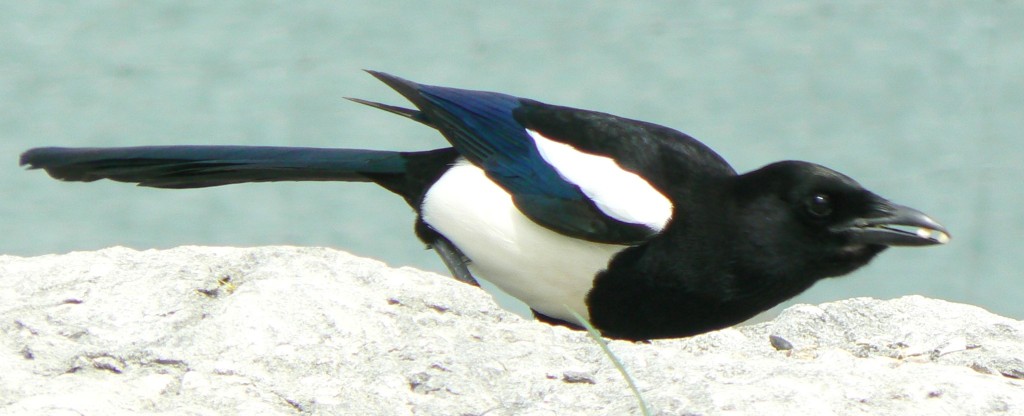
[265] Pica pica, Magpie
Introduction
Pica pica, the Magpie, is a common and widespread bird in the Crow family that is a bit more colourful than Corvus species ([098] Crow and [099] Rook,) but not as good-looking as [159] the Jay.
It is also known as Common Magpie or Eurasian Magpie to distinguish it from other species in the genus Pica.
Other closely related genera have similar looking birds usually called magpies or magpie-jays.
Taxonomy
Kingdom – Animals
Phylum – Chordates
Class – Aves (Birds)
Order – Passeriformes
Family – Corvidae (Crows, Jays, Magpies and others)
Tribe – Corvinae
Genus – Pica
Scientific Name – Pica
Pica pica pica is the subspecies seen in the UK
Name
The history of the word Magpie is interesting. They were originally called just Pies, from old Indo-European roots meaning pointed (either from the bill or the long tail.)
In the Sixteenth Century the prefix Mag- was added. From an old shortened form of the name Margaret, it meant women in general and was an allusion to their call sound – like the idle chattering of a woman. If you have ever heard a Magpie, you will appreciate that this was not a compliment to womankind!
You can compare the names of [088] the Jackdaw and perhaps [135] the Robin, which have also changed over the centuries.
The word ‘pied’ for other birds with black-and-white plumage dates from about 1550. We have seen [231] the Pied Wagtail. This usage extends to other animals such as [021] the Small Magpie (Moth).
The classical Latin name for the bird was pica, which is cognate with picus, the Latin for a woodpecker. (See [115] Great Spotted Woodpecker.)
As I have mentioned before, animals are allowed to repeat the genus name as a species epithet but plants are not.
Description
Pica Pica is generally considered to have six geographically defined subspecies, with some overlap. For most of Europe we have the nominate subspecies Pica pica pica.
It’s more or less a black-and-white version of typical members of the Crow family, with a long tail. Its head, back and legs are black, with a chunky black bill. The shoulders and belly are pure white. The sides and tail appear black at a distance but have various iridescent shades of dark green, turquoise, blue or purple.
Its long straight tail is slightly longer than the rest of its body.
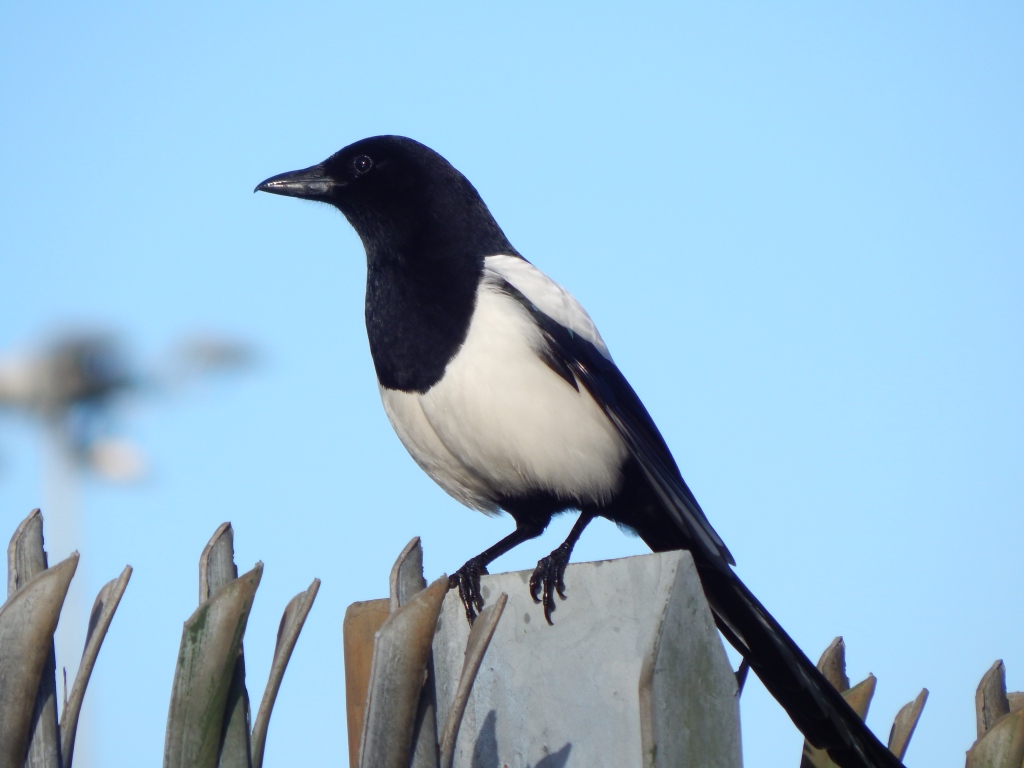
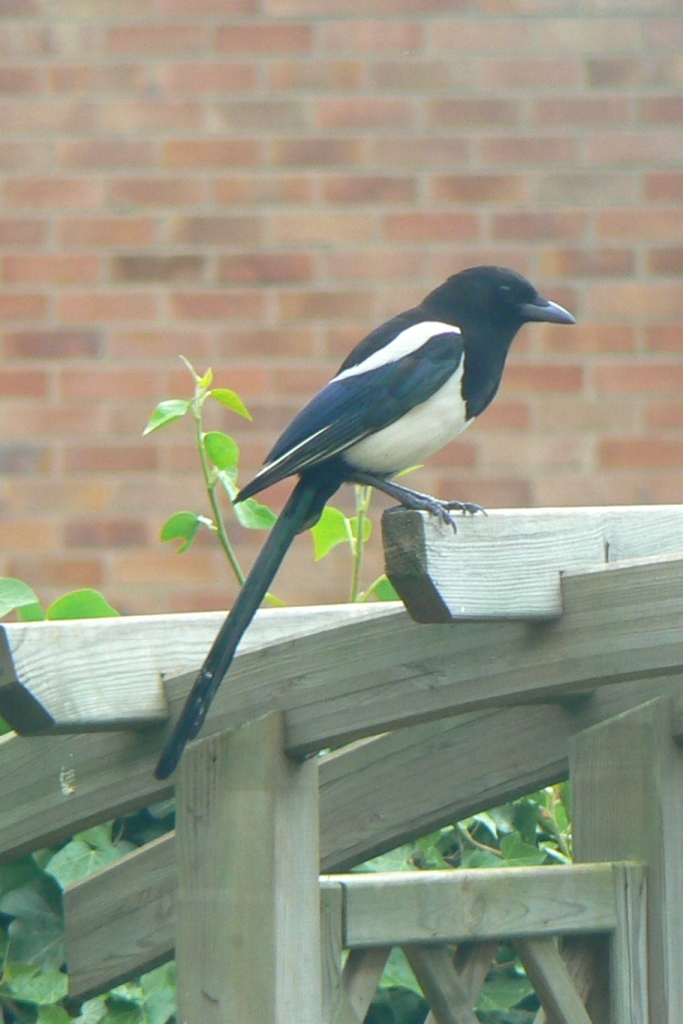
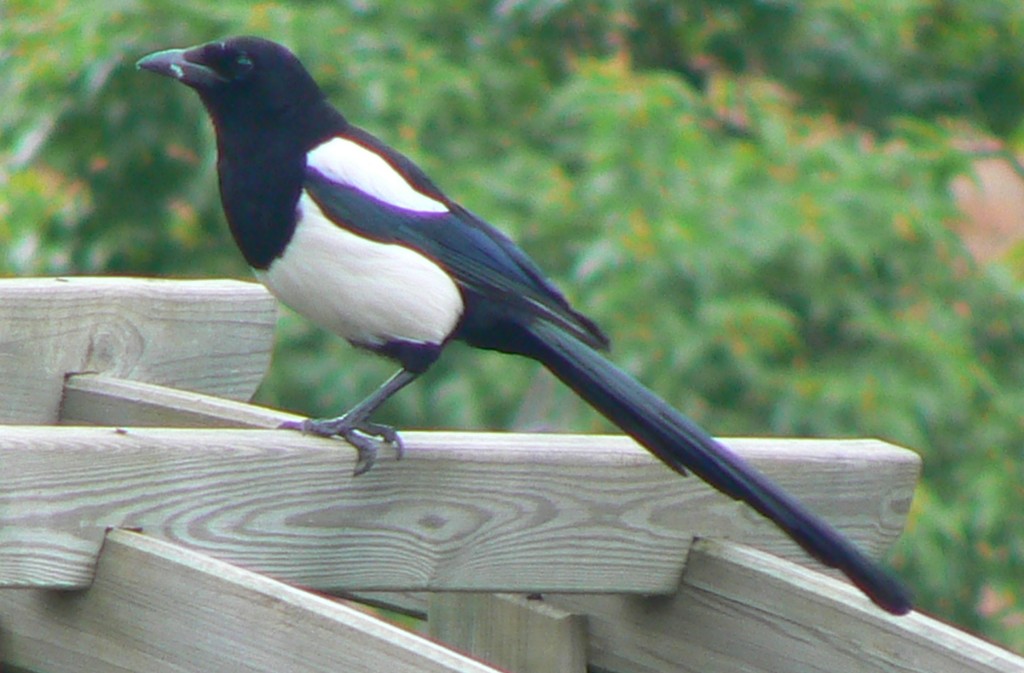
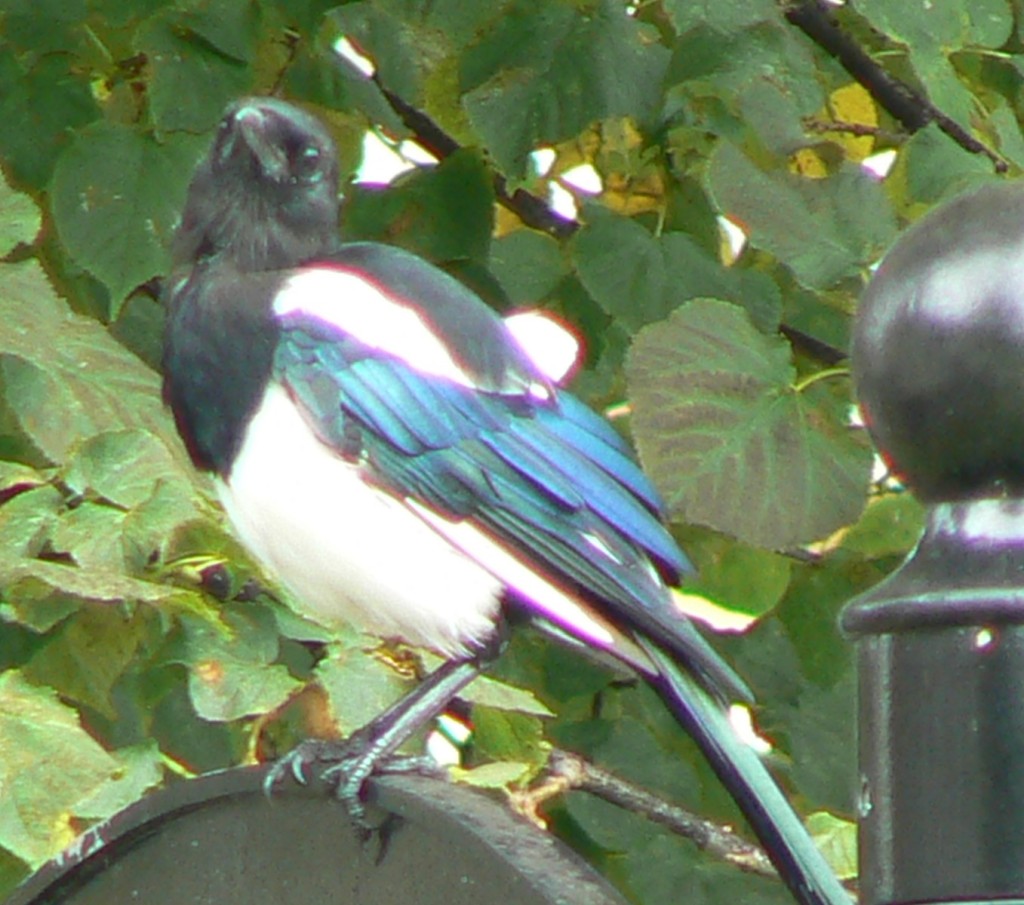
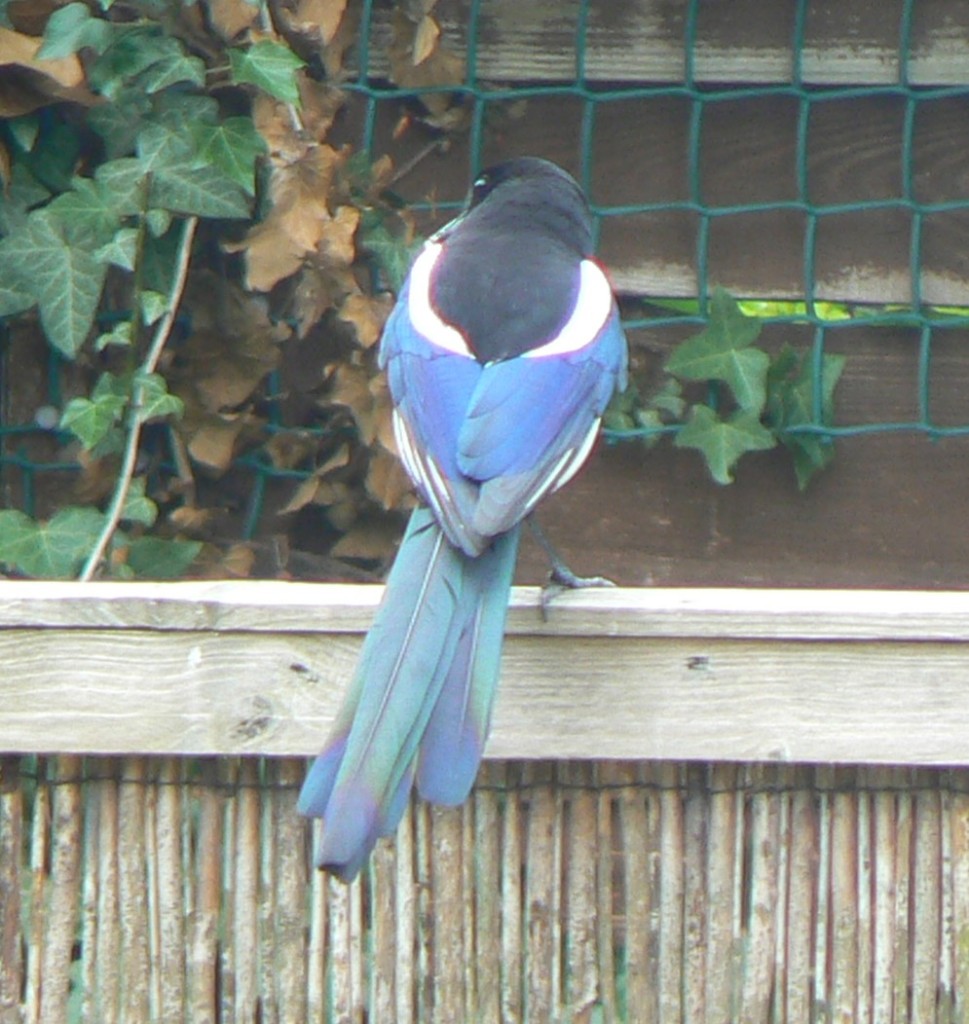
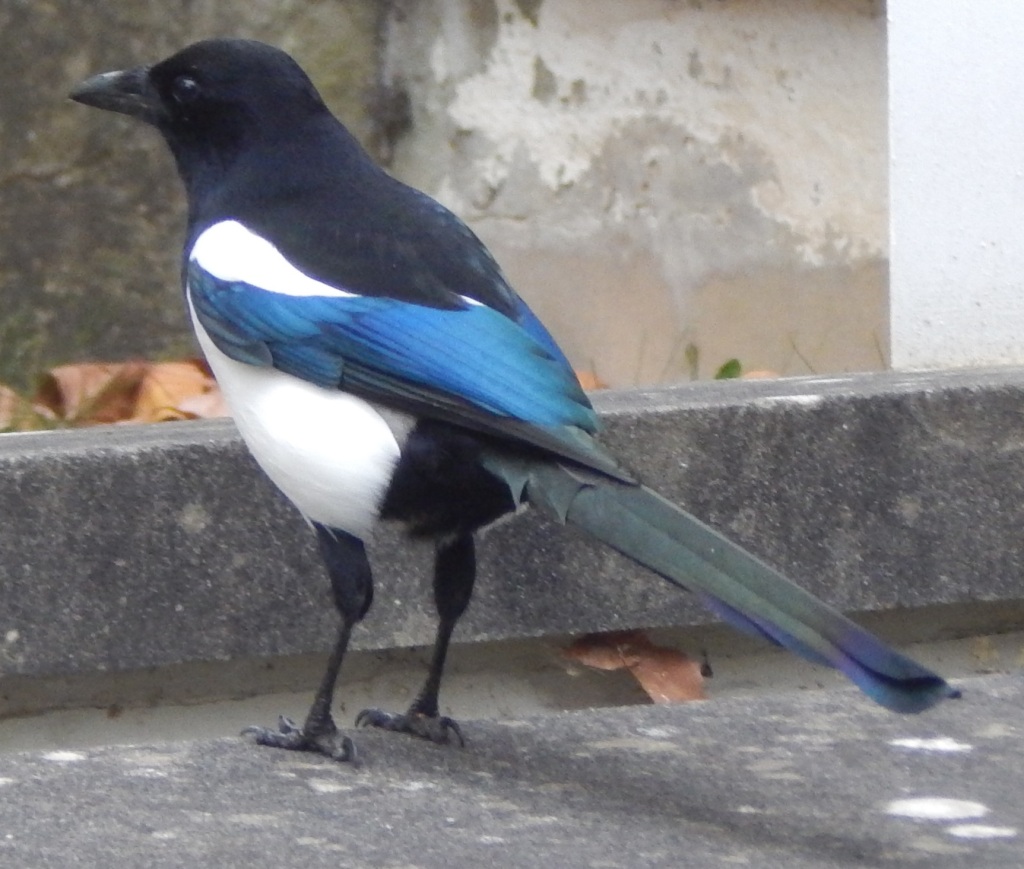

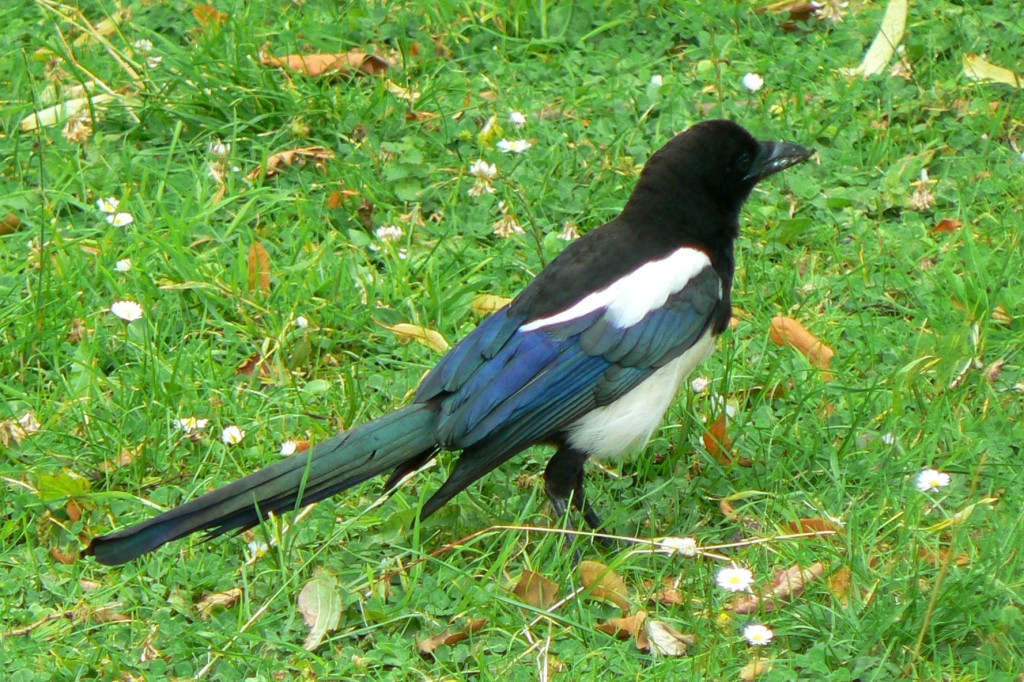
As for many birds the male is slightly larger than the female but both sexes are essentially similar.
They are omnivorous and will eat young birds and eggs, small mammals, carrion, insects, acorns, grains and other vegetation.
Its call is a rasping ratchet sound, not as harsh as that of the Jay.
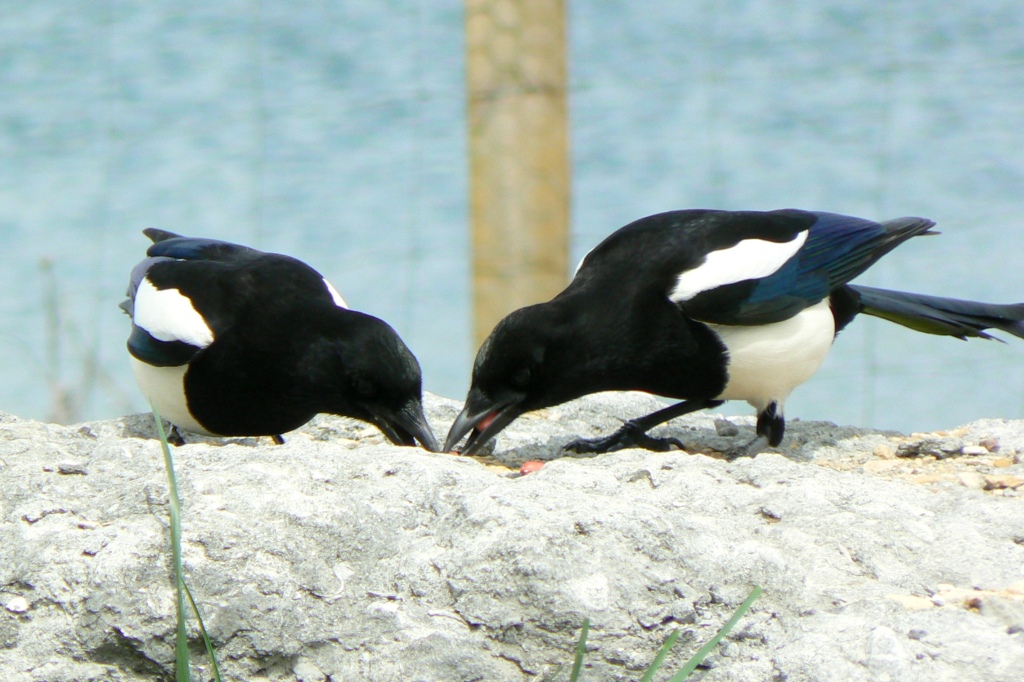
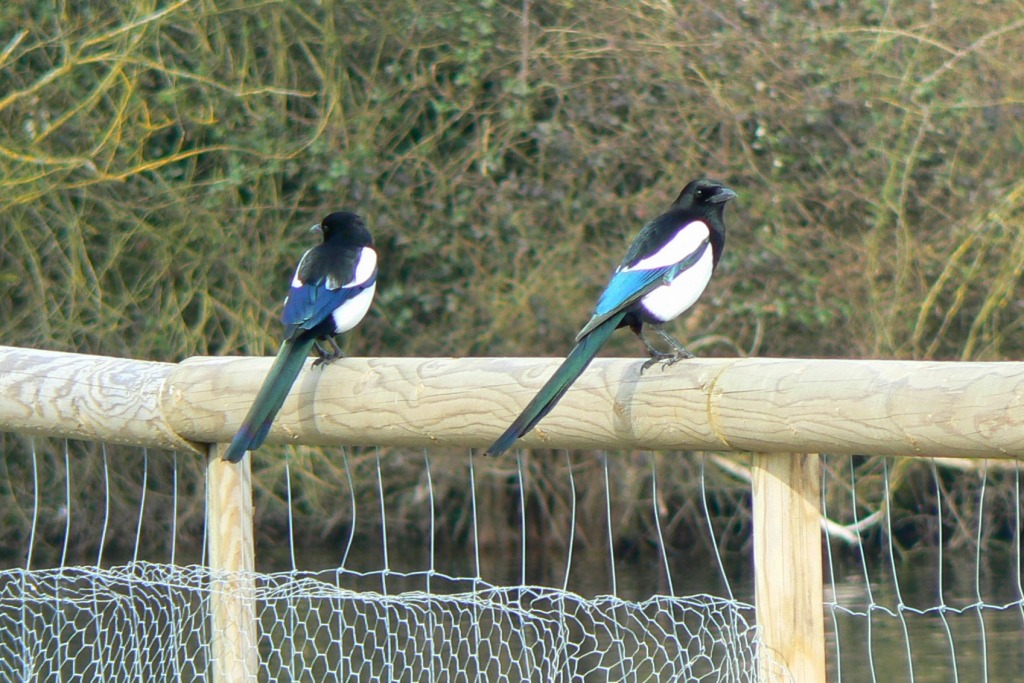
Habitat
The Common Magpie is found over all of Europe and central and eastern Asia, with several geographically distinct subspecies. (The Black-billed Magpie, Pica hudsonia, found in northwest North America, is almost identical and sometimes considered a subspecies of Pica pica.)
Pica pica prefers open countryside but they are not so wary of humans as other members of the Crow family. They are much more likely to be seen in towns and even visiting domestic gardens. They don’t generally visit bird feeders.
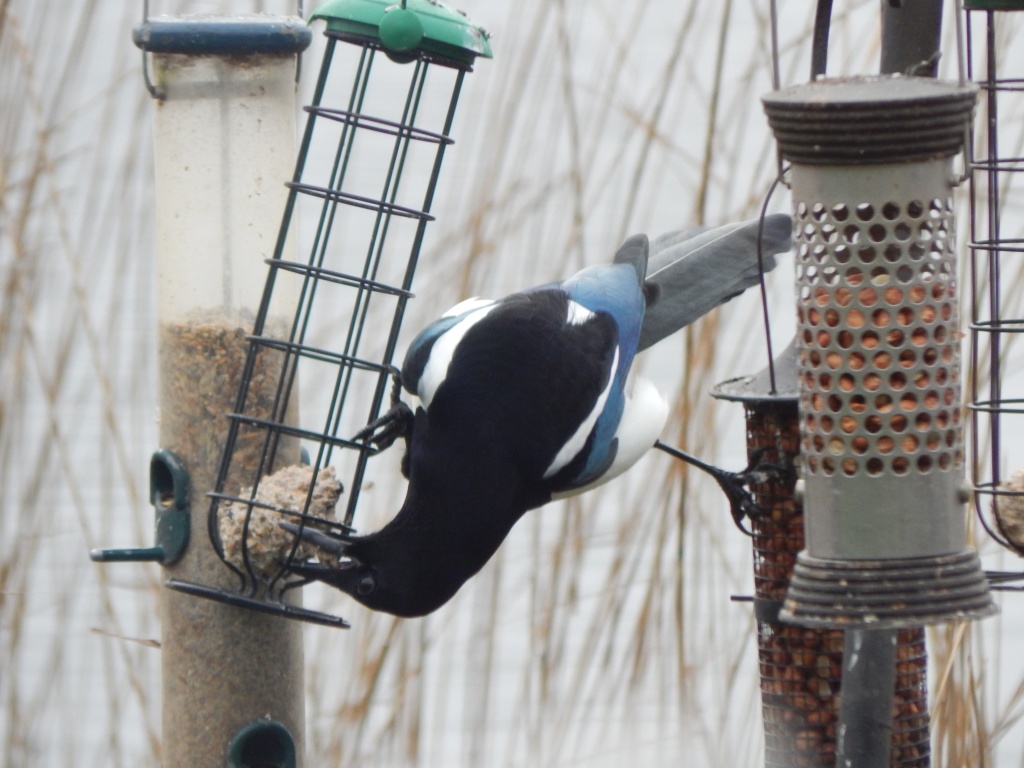
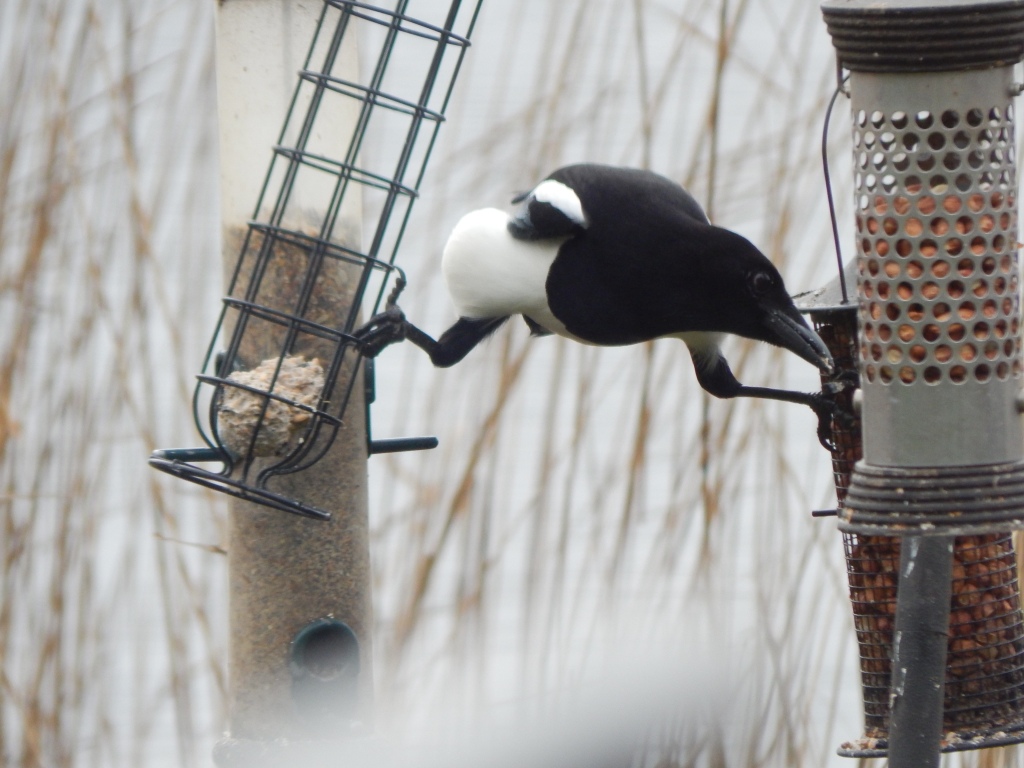
Other Notes
- There are many superstitions associated with Magpies. There is a tradition of predicting fortune by how many are seen according to a rhyme that may start: ‘One for sorrow; Two for joy; Three for a girl; Four for a boy …’ But there are local variations in the words, and sometimes similar rhymes have been associated with Crows and Jackdaws. There are also still many people who like to greet a single Magpie with an incantation like ‘Good Morning Mr Magpie,’ to ward off ill-luck. Again, there are many local variations.
- They are not gregarious like Rooks and will often be seen singly or as a pair. It is also common to see a family group with a pair obviously looking after three or four younger birds. The juvenile birds look similar with somewhat shorter tails.
- The Magpie is probably the most intelligent species of bird and could be the most intelligent non-mammal species of animals. Other Corvids also do well in tests and experiments on their intelligence.
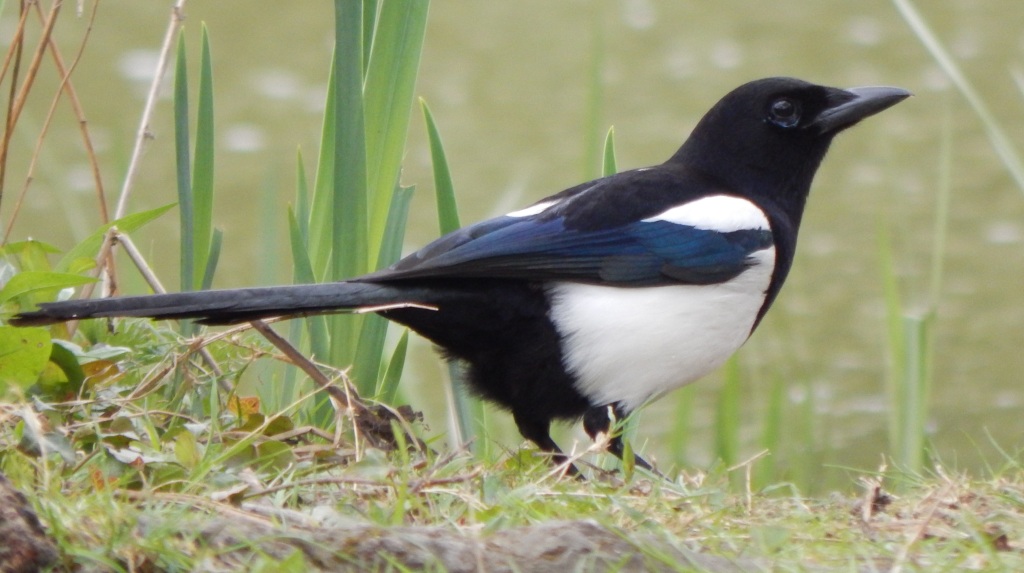
See also
The closest relative of the Magpie is the Jay.
